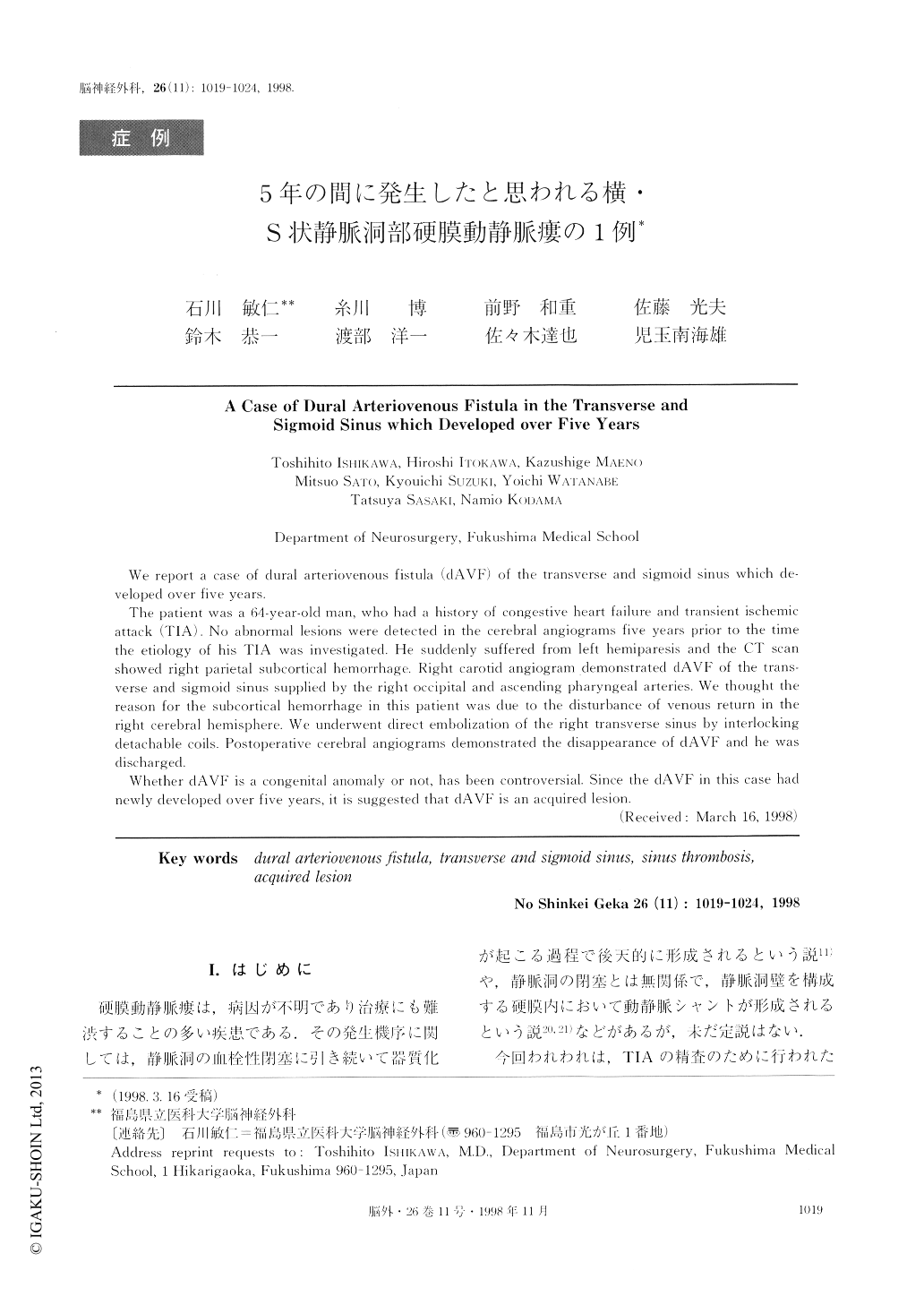Japanese
English
- 有料閲覧
- Abstract 文献概要
- 1ページ目 Look Inside
I.はじめに
硬膜動静脈瘻は,病因が不明であり治療にも難渋することの多い疾患である.その発生機序に関しては,静脈洞の血栓性閉塞に引き続いて器質化が起こる過程で後天的に形成されるという説11)や,静脈洞の閉塞とは無関係で,静脈洞壁を構成する硬膜内において動静脈シャントが形成されるという説20,21)などがあるが,未だ定説はない.
今回われわれは,TIAの精査のために行われた初回の脳血管撮影で異常所見を認めなかったが,その5年後に脳内出血で発症し,脳血管撮影で新たに横・S状静脈洞部に硬膜動静脈瘻を認めた1例を経験したので,その成因に関して文献的考察を加え報告する.
We report a case of dural arteriovenous fistula (dAVF) of the transverse and sigmoid sinus which de-veloped over five years.
The patient was a 64-year-old man, who had a history of congestive heart failure and transient ischemic attack (TIA). No abnormal lesions were detected in the cerebral angiograms five years prior to the time the etiology of his TIA was investigated. He suddenly suffered from left hemiparesis and the CT scan showed right parietal subcortical hemorrhage. Right carotid angiogram demonstrated dAVF of the trans-verse and sigmoid sinus supplied by the right occipital and ascending pharyngeal arteries. We thought the reason for the subcortical hemorrhage in this patient was due to the disturbance of venous return in the right cerebral hemlsphere. We underwent direct embolization of the right transverse sinus by interlocking detachable coils. Postoperative cerebral angiograms demonstrated the disappearance of dAVF and he was discharged.
Whether dAVF is a congenital anomaly or not, has been controversial. Since the dAVF in this case had newly developed over five years, it is suggested that dAVF is an acquired lesion.

Copyright © 1998, Igaku-Shoin Ltd. All rights reserved.


